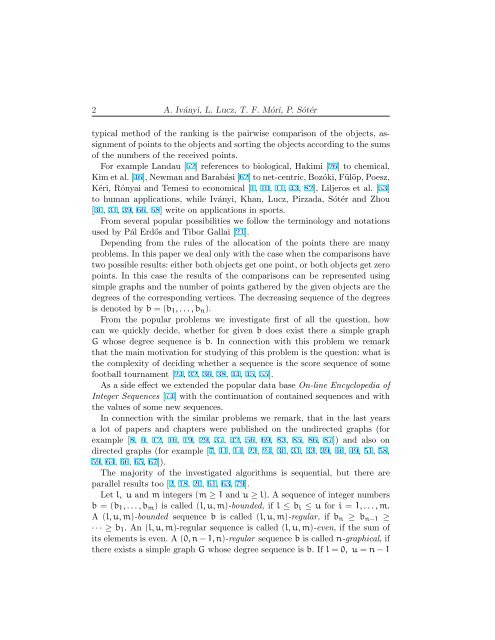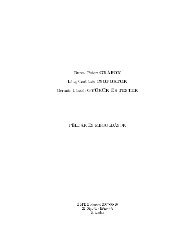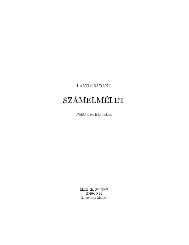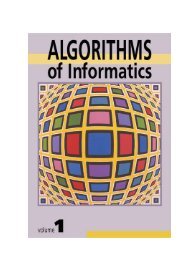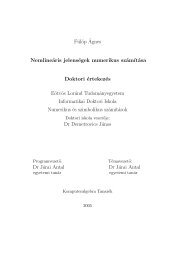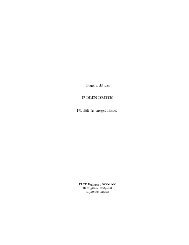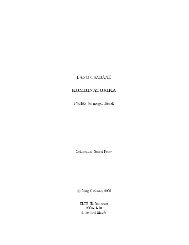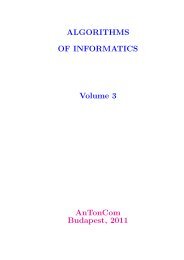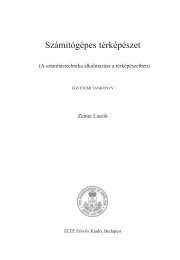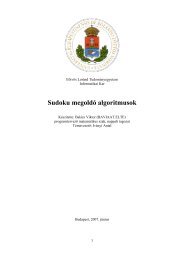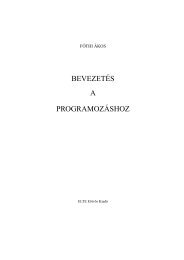On Erd˝os-Gallai and Havel-Hakimi algorithms
On Erd˝os-Gallai and Havel-Hakimi algorithms
On Erd˝os-Gallai and Havel-Hakimi algorithms
Create successful ePaper yourself
Turn your PDF publications into a flip-book with our unique Google optimized e-Paper software.
2 A. Iványi, L. Lucz, T. F. Móri, P. Sótér<br />
typical method of the ranking is the pairwise comparison of the objects, assignment<br />
of points to the objects <strong>and</strong> sorting the objects according to the sums<br />
of the numbers of the received points.<br />
For example L<strong>and</strong>au [52] references to biological, <strong>Hakimi</strong> [26] to chemical,<br />
Kim et al. [46], Newman <strong>and</strong> Barabási [62] to net-centric, Bozóki, Fülöp, Poesz,<br />
Kéri, Rónyai <strong>and</strong> Temesi to economical [1, 10, 11, 43, 82], Liljeros et al. [53]<br />
to human applications, while Iványi, Khan, Lucz, Pirzada, Sótér <strong>and</strong> Zhou<br />
[30, 31, 39, 66, 68] write on applications in sports.<br />
From several popular possibilities we follow the terminology <strong>and</strong> notations<br />
used by Pál Erdős <strong>and</strong> Tibor <strong>Gallai</strong> [21].<br />
Depending from the rules of the allocation of the points there are many<br />
problems. In this paper we deal only with the case when the comparisons have<br />
two possible results: either both objects get one point, or both objects get zero<br />
points. In this case the results of the comparisons can be represented using<br />
simple graphs <strong>and</strong> the number of points gathered by the given objects are the<br />
degrees of the corresponding vertices. The decreasing sequence of the degrees<br />
is denoted by b = (b1, . . . , bn).<br />
From the popular problems we investigate first of all the question, how<br />
can we quickly decide, whether for given b does exist there a simple graph<br />
G whose degree sequence is b. In connection with this problem we remark<br />
that the main motivation for studying of this problem is the question: what is<br />
the complexity of deciding whether a sequence is the score sequence of some<br />
football tournament [24, 32, 36, 38, 44, 45, 55].<br />
As a side effect we extended the popular data base <strong>On</strong>-line Encyclopedia of<br />
Integer Sequences [74] with the continuation of contained sequences <strong>and</strong> with<br />
the values of some new sequences.<br />
In connection with the similar problems we remark, that in the last years<br />
a lot of papers <strong>and</strong> chapters were published on the undirected graphs (for<br />
example [8, 9, 12, 16, 19, 29, 37, 42, 56, 69, 83, 85, 86, 87]) <strong>and</strong> also on<br />
directed graphs (for example [7, 11, 14, 23, 24, 30, 31, 33, 39, 46, 49, 51, 58,<br />
59, 64, 66, 65, 67]).<br />
The majority of the investigated <strong>algorithms</strong> is sequential, but there are<br />
parallel results too [2, 18, 20, 61, 63, 79].<br />
Let l, u <strong>and</strong> m integers (m ≥ 1 <strong>and</strong> u ≥ l). A sequence of integer numbers<br />
b = (b1, . . . , bm) is called (l, u, m)-bounded, if l ≤ bi ≤ u for i = 1, . . . , m.<br />
A (l, u, m)-bounded sequence b is called (l, u, m)-regular, if bn ≥ bn−1 ≥<br />
· · · ≥ b1. An (l, u, m)-regular sequence is called (l, u, m)-even, if the sum of<br />
its elements is even. A (0, n − 1, n)-regular sequence b is called n-graphical, if<br />
there exists a simple graph G whose degree sequence is b. If l = 0, u = n − 1


